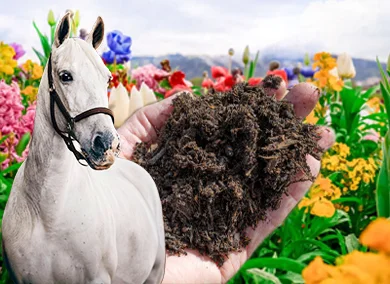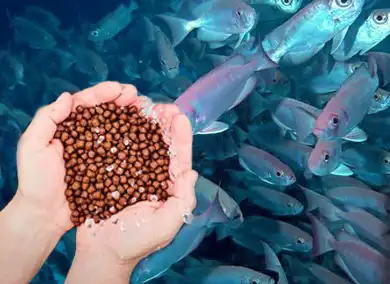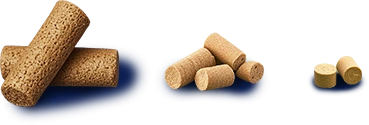Cotton farming creates a lot of leftover plant material, and cotton stalks make up a large part of it. Instead of burning or throwing them away, a better option is to turn them into high-energy biomass pellets. This reduces pollution and offers a cleaner, more sustainable way to produce heat for homes and businesses.

The Potential of Cotton Stalks as Biomass Energy
1. Abundant Raw Material
- High yield: Cotton is widely grown in countries like the U.S., China, and India. Each ton of harvested cotton produces about 2 to 3 tons of stalks.
- Waste to resource: Cotton stalks are usually discarded or burned. Repurposing them as fuel reduces waste and environmental harm.
2. Efficient Energy Source
- Dry cotton stalks provide 14 to 17 MJ of energy per kilogram. Close to low-grade wood and higher than many other crop residues.
- After harvest, stalks quickly lose moisture, reaching the ideal 8–15% level for pelletizing without extra drying.
- Cotton stalks as clean energy fuel produce less than 6% ash and contain little sulfur, making them cleaner to burn.
- The CO₂ released when burning is roughly equal to what the plant absorbed while growing.
3. Environmental and Economic Benefits
- Lower disposal cost: Instead of paying for transport or burning, farmers can process stalks on-site using a pellet mill.
- Cleaner energy: Biomass pellets release less sulfur and ash, helping meet environmental standards and improve air quality.
- Extra income: Can Use Pellets for power plants, heating businesses, or farms. They are more valuable than raw stalks.
4. Policy Support and Market Trends
- Global policy trends emphasize reducing fossil fuel dependence, promoting carbon neutralization and promoting renewable energy development. Using cotton straw particles agricultural waste to make clean fuel. And these particles as biomass energy, effectively reducing carbon emissions, are in line with this policy direction.
- The global biomass pellet market is growing fast. It's expected to reach $13.1–24.98 billion by 2026–2029. Cotton stalks, as a common waste material, are seen as a promising feedstock.

Cotton stalks offer a win-win: better use of farm waste and cleaner energy. It also reduces disposal costs. The pellets provide clean and efficient energy for heating and industrial use.
Cotton Stalk Pellets vs. Other Biomass Fuel Pellets
| Fuel Type | Calorific Value (MJ/kg) | Ash (%) | Sulfur (%) | Cost | Stability |
| Cotton Stalk | 14–17 | <6 | ~0.1 | Low | Good |
| Sawdust | 17–20 | ~2 | <0.1 | High | Excellent |
| Rice Husk | 13–15 | 15–20 | 0.04–0.08 | Medium | Poor |
| Corn Stalk | 14–16 | ~7 | ~0.1 | Medium | Good |
| Sugarcane Bagasse | ~17 | ~4 | ~0.1 | Low | Poor |
| Soybean straw pellets | 13-15 | 6–9 | ~0.2 | Low | Good |
Compared to other fuels, cotton stalk pellets offer a solid balance of availability, cost, and clean-burning properties.
Source: Briquette calorific value data for biomass, sawdust, coal, charcoal & Experimental Study of Cotton Stalk Pellet Renewable Energy Potential
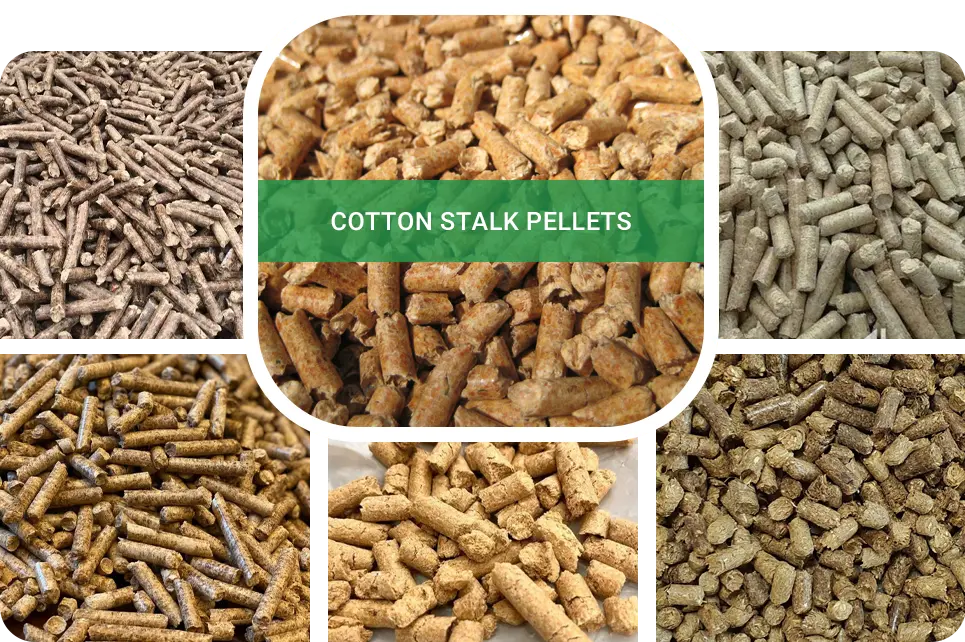
How to Make Cotton Stalk Pellets
| Step | Equipment | Key Notes |
| 1. Collect & Dry | Mower, baler (optional) | Moisture: 8–15% |
| 2. Grind | Hammer mill | Particle size <6 mm |
| 3. Pelletize | Flat die or ring die pellet mill | Diameter: 6–12 mm |
| 4. Dry (if needed) | Dryer (optional) | |
| 5. Cool | Cooler (optional) | Near room temperature |
| 6. Screen | Vibrating sieve (optional) | Fines <1% |
| 7. Pack | Packing machine |
Tip:One simple way to check moisture is to break the stalk by hand. If it snaps cleanly, the moisture is likely below15%perfect for pelletizing. If it snaps cleanly, the moisture is likely below 15% perfect for pelletizing.
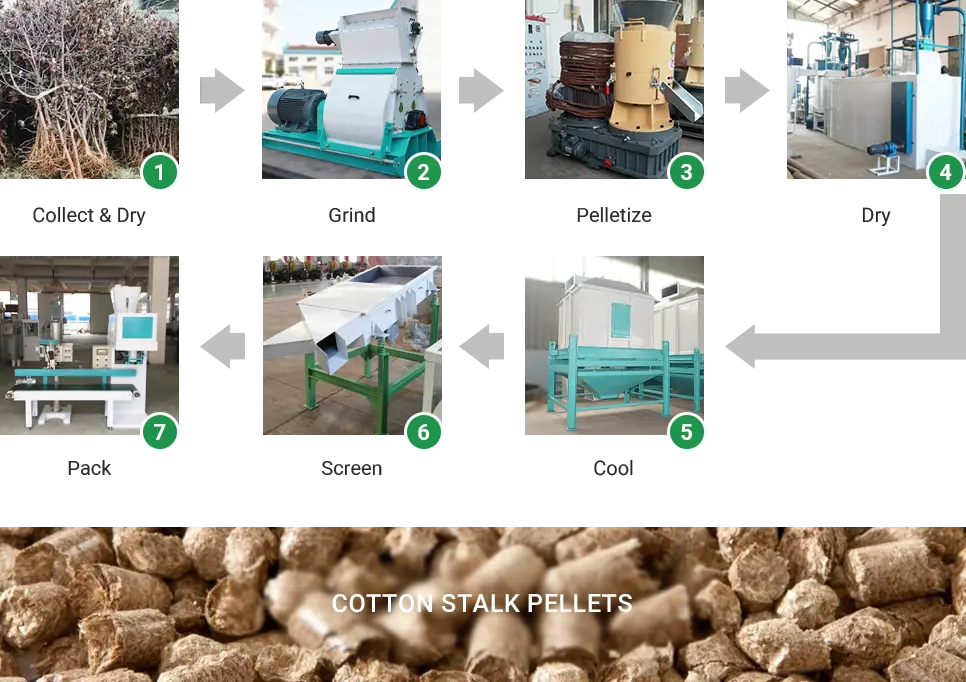
Frequently Asked Questions About Cotton Stalk Pellets
Is Making Cotton Stalk Pellets Right for You?
If you grow cotton, work in agriculture, or simply want to turn waste into fuel, cotton stem pellets could be a great fit. With cotton stalks and a small pellet machine, you can easily make your own fuel.
Can My Stove or Boiler Use Cotton Stalk Pellets?
Yes. Cotton stalk pellets work in most biomass stoves, boilers, and industrial burners. They're suitable for heating, hot water, or even steam generation. Just make sure your equipment is designed for biomass fuel. Just make sure your equipment burns biomass fuel safely and efficiently.
Are There Any Drawbacks to Using Cotton Stalk Pellets?
Like other crop-based fuels, cotton stalk pellets may produce more ash than wood and can absorb moisture if not stored properly. But you can manage these issues with dry storage and regular cleaning. Overall, they remain a reliable and efficient fuel choice.
Are Cotton Stalk Pellets Safe and Clean to Use Indoors?
Yes. When burned in a proper biomass stove or boiler, they’re safe and low in emissions. Cotton stalk pellets burn with less smoke and have low sulfur content. This makes them a cleaner choice for homes and small businesses.



